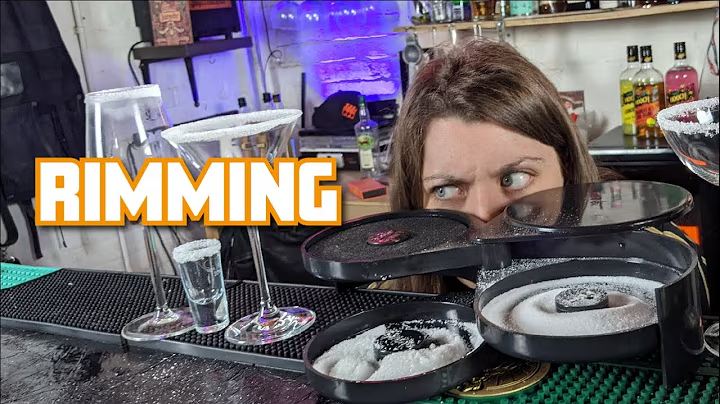DIY Repair for Cracked Carbon Fiber | Fixing Damaged Epoxy Resin
Table of Contents
- Introduction
- Understanding the Damage
- Gather the Tools and Materials
- Preparing the damaged area
- Applying the Epoxy
- Leveling out the Epoxy
- Wet Sanding for a Smooth Finish
- Final Polishing
- Conclusion
- Frequently Asked Questions
Introduction
Repairing damaged carbon fiber parts can be a costly endeavor, especially when it comes to replacement. However, with the right tools and materials, it is possible to repair small damages without having to replace the entire piece. In this article, we will discuss the step-by-step process of repairing a damaged front carbon fiber lip on a Datsun 280z. By following these instructions, you will be able to repair similar damages on your own car, saving both time and money.
Understanding the Damage
Before you begin the repair process, it is important to assess the damage. In this case, the damage was minimal, consisting of small chips and scratches on the front of the lip. While these blemishes may be superficial, it is still necessary to repair them to maintain the aesthetics of the car. Repairing carbon fiber requires chipping away at the delaminated resin and exposing the bare weave. It is crucial to be cautious during this process to avoid damaging the weave, which could affect the final repair.
Gather the Tools and Materials
To repair the damaged carbon fiber lip, you will need a few essential tools and materials. Most of these can be found around your house, making the repair process more accessible. Here's a list of what you will need:
- Sandpaper (150 to 3000 grit)
- Sanding block
- Plastic sheets
- Five-minute epoxy from Devcon
- Mixing tip for epoxy
- Paintbrushes
- Small dishes for epoxy application
- Isopropyl alcohol for cleaning
These tools and materials will help you in every step of the repair process, from preparing the damaged area to applying the epoxy.
Preparing the damaged area
Before applying the epoxy, it is crucial to prepare the damaged area properly. Start by chipping away at the delaminated resin using an X-Acto knife, creating a cavity to fill with new resin. Be careful not to damage the weave during this process, as it will be visible in the final repair. Once the delaminated resin is removed, use 320-grit sandpaper to roughen up the edges and smooth down any uneven surfaces. Finally, clean the area with isopropyl alcohol to remove any residue or dust that could interfere with the repair.
Applying the Epoxy
The next step is to apply the epoxy to the repaired area. The five-minute epoxy from Devcon is an excellent choice for this repair because of its clarity and ease of use. Start by pushing the epoxy out of the syringe onto a dish. Use a small brush to apply the epoxy into the cavities and air pockets, ensuring it fills all the damaged spots. This initial application will help eliminate any air gaps and whiteness. Depending on the severity of the damage, you may need to repeat this step two or three times, allowing the epoxy to dry slightly between applications.
Leveling out the Epoxy
Once the epoxy has cured for about 15 minutes, it's time to level out the repair. Use 360-grit wet sandpaper and a wet towel to sand the repaired area. The goal is to smooth out any high spots and determine if any additional epoxy is needed for low spots. This process will help refine the repair and prepare it for the final polishing stage.
Wet Sanding for a Smooth Finish
To achieve a smooth and flawless finish, continue sanding the repaired area with finer and finer sandpapers. Progressively move from 360 to 2000 grit, making sure to keep the sandpaper wet to avoid scratching the surface. Wet sanding will help eliminate any haziness and create a polished appearance. Remember to wipe down the repaired area after each sanding step to monitor the progress and adjust if necessary.
Final Polishing
After completing the sanding process with 2000 grit, it's time for the final polishing. Use a polishing compound and a soft cloth or buffing pad to restore the shine and luster of the repaired carbon fiber. Apply the polishing compound in circular motions until you achieve the desired finish. Take your time during this step to ensure the repair blends seamlessly with the surrounding area.
Conclusion
Repairing damaged carbon fiber parts can be a cost-effective alternative to replacement. With the right tools, materials, and techniques, it is possible to repair small damages at home. By following the step-by-step process outlined in this article, you can confidently repair your own carbon fiber parts and maintain the aesthetics of your vehicle without breaking the bank.
Frequently Asked Questions
Q: Can I use this repair method on larger damages?
A: While this repair method is primarily suitable for smaller damages, the same principles can be applied to more significant damages. However, larger damages may require additional steps and expertise.
Q: How long does the epoxy take to dry?
A: The five-minute epoxy from Devcon typically dries within 15 minutes. However, curing times may vary depending on temperature and humidity levels.
Q: Can I apply clear coat over the repaired area?
A: Yes, once the repair is complete and the epoxy has fully cured, you can apply a clear coat to further protect and enhance the repaired carbon fiber.
Q: Can I use this method to repair carbon fiber on other vehicles?
A: Yes, the repair process outlined in this article can generally be applied to carbon fiber parts on other vehicles. However, always consider the specific characteristics and requirements of each part before proceeding with the repair.
Q: Are there any limitations to this repair method?
A: This repair method is effective for small damages on carbon fiber parts. However, if the damage is extensive or affects the structural integrity of the part, it is recommended to consult a professional or consider replacement.
Resources:







